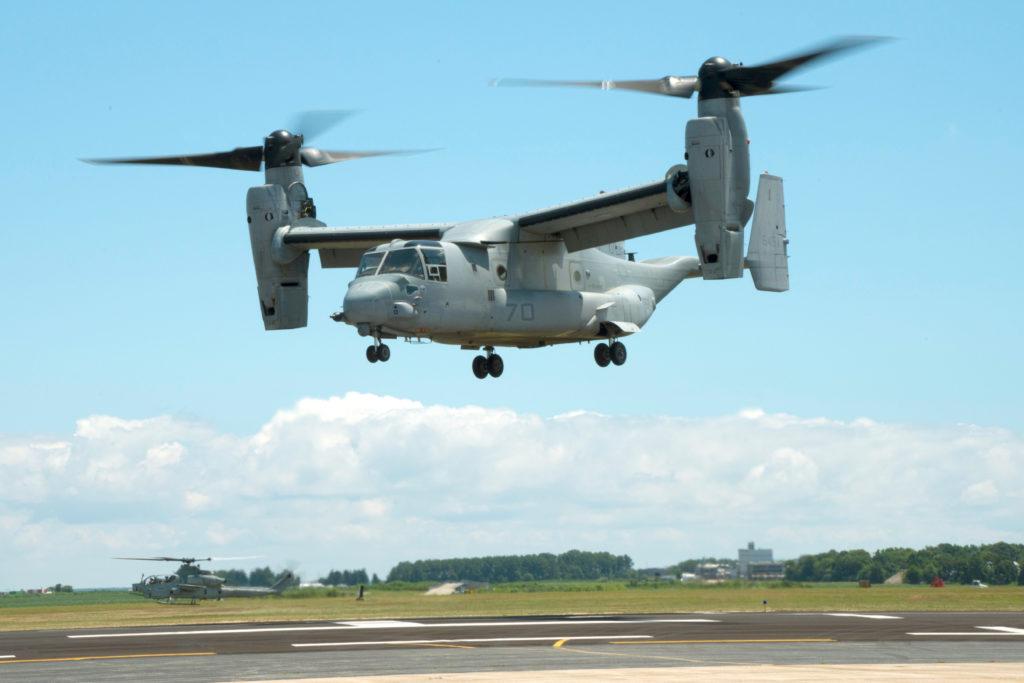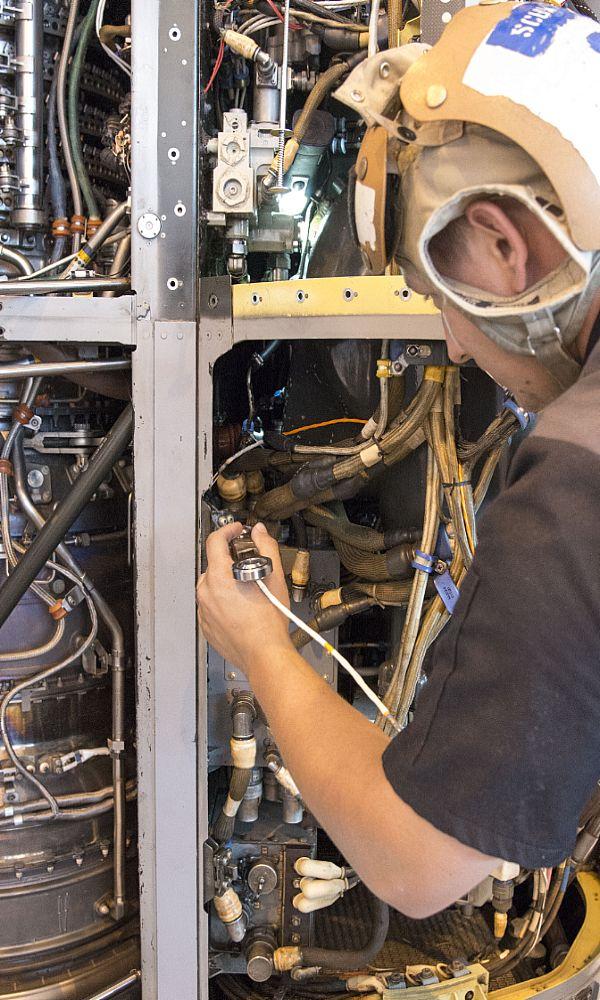 Since the 1990s, additive manufacturing has been a part of naval aviation, but it’s only recently that the technology has moved past strictly prototyping purposes. The US Naval Air Systems Command (NAVAIR) has been working towards making additive manufacturing a big part of their operations, starting with the creation of a 3D printed flight-critical component. On July 29, that component was tested for the first time.
Since the 1990s, additive manufacturing has been a part of naval aviation, but it’s only recently that the technology has moved past strictly prototyping purposes. The US Naval Air Systems Command (NAVAIR) has been working towards making additive manufacturing a big part of their operations, starting with the creation of a 3D printed flight-critical component. On July 29, that component was tested for the first time.
An MV-22B Osprey military aircraft was test flown at the Patuxent River Naval Air Station in Maryland, with its engine nacelle secured to the primary wing structure by a 3D printed titanium link and fitting assembly. The components had been printed at the Naval Air Warfare Center Aircraft Division in Lakehurst, New Jersey, and according to MV-22 Project Officer Maj. Travis Stephenson, who piloted the test flight, they performed wonderfully.
The link and fitting assembly was only one of four that held the engine nacelle in place, but its successful in-flight performance opens the door for the Navy to begin incorporating more and more 3D printed components into their aircraft.“The flight went great,” he said. “I never would have known that we had anything different onboard.”
The Osprey aircraft was developed by Boeing and Bell Helicopter; in April, the Navy awarded the Bell-Boeing Joint Project Office $151 million to begin engineering a Navy-optimized variation of the Marine Corps’ MV-22. The variant, which has been named the CMV-22B, will combine the multimission, special-force capabilities of the MV-22 with the cargo-carrying potential of the Air Force’s CV-22.“The flight today is a great first step toward using AM wherever and whenever we need to. It will revolutionize how we repair our aircraft and develop and field new capabilities – AM is a game changer,” said Liz McMichael, AM Integrated Product Team lead. “In the last 18 months, we’ve started to crack the code on using AM safely. We’ll be working with V-22 to go from this first flight demonstration to a formal configuration change to use these parts on any V-22 aircraft.”
While production of the CMV-22B is not expected to begin until 2018, it’s a good bet that it will contain at least a few 3D printed components. McMichael and her team have already made plans for six additional safety-critical components to be produced and tested over the next year for the Marine Corps’ V-22, H-1 and CH-53K rotorcraft. Three of the parts will be printed from titanium, and three from stainless steel.
The successful test of the link and fitting assembly marked the first time that the Navy successfully carried out a flight demonstration of a safety-critical 3D printed component. It was the first step in achieving a vision of on-demand manufacturing, a future in which the Navy’s fleet maintainers, operators and industry partners can stock parts digitally and only print them as needed. However, while this test flight is cause for celebration, NAVAIR Commander Vice Adm. Paul A. Grosklags cautions against getting overconfident – there’s still a lot of work left to be done.
“Our AM team has done some incredible work in a relatively short period of time – both internally through its production of aircraft components to be used in flight testing and externally through its liaison with industry and other government organizations,” said Grosklags. “Although the flight today is a great step forward, we are not trying to ‘lead’ industry in our AM efforts, but it is absolutely critical that we understand what it takes to successfully manufacture and qualify AM parts for flight in naval aircraft, which we expect will largely be manufactured by our industry partners. Where I believe we can ‘lead’ industry is in the development of the AM ‘digital thread,’ from initial design tools all the way to the flight line – securely maintained and managed through the life of an aircraft program.”
Discuss this new technology further in the NAVAIR Integrating 3D Printing forum over at 3DPB.com.
Subscribe to Our Email Newsletter
Stay up-to-date on all the latest news from the 3D printing industry and receive information and offers from third party vendors.
You May Also Like
Precision at the Microscale: UK Researchers Advance Medical Devices with BMF’s 3D Printing Tech
University of Nottingham researchers are using Boston Micro Fabrication‘s (BMF) 3D printing technology to develop medical devices that improve compatibility with human tissue. Funded by a UK grant, this project...
3D Printing Webinar and Event Roundup: April 21, 2024
It’s another busy week of webinars and events, starting with Hannover Messe in Germany and continuing with Metalcasting Congress, Chinaplas, TechBlick’s Innovation Festival, and more. Stratasys continues its advanced training...
3D Printing Webinar and Event Roundup: March 17, 2024
It’s another busy week of webinars and events, including SALMED 2024 and AM Forum in Berlin. Stratasys continues its in-person training and is offering two webinars, ASTM is holding a...
3D Printed Micro Antenna is 15% Smaller and 6X Lighter
Horizon Microtechnologies has achieved success in creating a high-frequency D-Band horn antenna through micro 3D printing. However, this achievement did not rely solely on 3D printing; it involved a combination...































